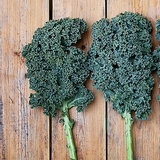Your weight loss program has been highly successful, and you’ve reduced more than 20 pounds. Your commitment to losing weight and working hard to achieve a certain body size through diet and exercise, however, has not yielded 100% results. You’re happy with your progress, but one issue stands out: Apron Belly!
Apron Belly: Causes and solutions for a toned stomach after weight loss
You are not alone—many others face this issue. But what is it? Apron belly is the sagging of the stomach, with excess skin and fatty tissue hanging below the abdomen. It is also called a Pannus stomach, Mother’s apron, or abdominal Pannus.

Appearance
Pannus is a pouch of skin and tissue that hangs from the abdomen and may extend to the pubic/groin area, or in rare cases, down to the knees. The build-up of Pannus can be either mashable or firm and hard.
According to the National Library of Medicine, the USA government website https://www.ncbi.nlm.nih.gov/books/NBK499822/, the loose flap is graded from 1 to 5—Grade 1 reaches the mons pubis, while Grade 5 reaches the knees.
Causes
Mostly harmless, this sagging flap may cause discomfort and skin infections, but it can also sometimes indicate serious health issues. It is highly common among women who have had at least one pregnancy. Women typically have more fat content in their bodies than men, making them more susceptible to this condition.
Lower belly fat occurs in men too! There are several causes of this condition:

- Pregnancy: The skin near the abdomen stretches to its extreme limit during pregnancy for the growing fetus. After the baby is delivered, the extra skin does not retract to pre-pregnancy levels. The abdominal muscles are also stretched and may become weak, unable to support the excess fat, causing it to sag.
- Weight fluctuations: Sudden weight gain stretches the abdominal skin and tissue, while sudden and significant weight loss may not give the skin time to regain its former elasticity.
- Obesity: People suffering from obesity are more likely to have fat accumulation in the abdomen, causing this type of belly in both men and women. This Pannus is harmful as it is directly linked to occurrences of heart attacks, high blood pressure, osteoarthritis, fatty liver, and strokes.
- Hormonal changes: As women approach menopause and experience fluctuating estrogen levels, fat redistribution occurs, leading to more fat in the abdominal area. The metabolic rate also naturally reduces, resulting in muscle loss and making it difficult to maintain a firm abdomen.
- Aging: As you get older, your body’s metabolism slows down. Extra pounds gained for various reasons may get stored near the belly, leading to a Pannus stomach. The muscles also lose their elasticity, preventing the abdomen from tightening.
- Inactive lifestyle: A lack of exercise may lead to love handles that can later develop into an apron belly.
- Genetics: Those whose parents are predisposed to store fat in the lower abdomen area may inherit these genes.
- Other health conditions: Individuals with insulin resistance or conditions like Cushing’s syndrome may have weight control issues. Weight gain around the abdomen can lead to this unique condition.
Effects of Apron Belly

- Health risks: You may experience difficulty walking. Rashes, swelling, and sores may occur, causing discomfort. Excess fat hanging down to the knees, hips, or thighs may impact mobility and daily routines. A Pannus flap can develop ulcers, become swollen, or exert pressure on other organs, causing severe pain.
- Bad posture: A large Pannus stomach will pull on the spine, causing you to lean forward, making it difficult to sit or stand properly.
- Loss of body confidence: Excess skin may hinder movement, causing it to hit your thighs as you walk, leading to awkward movements. This can make you self-conscious, leading to a loss of confidence in public places.
- Difficulty with clothing: The stretched belly may not provide the toned body silhouette you want to display.
How to Address This Issue
There are a few ways to treat this condition, depending on its severity and cause.
Non-surgical options for Apron Belly:
- Strengthening core muscles: Some people have found that strengthening their core muscles helped improve the appearance of Pannus stomach to a certain extent.
- CoolSculpting: This non-surgical treatment involves freezing fat cells in certain target areas.
- Laser or non-invasive radiofrequency: These treatments can help reduce the appearance of apron belly.
Surgery:
Apron Belly surgery or panniculectomy is a major procedure performed under general anesthesia. It involves the removal of excess fat and skin. This surgery is one of the best ways to address a Pannus stomach. You can also opt for an abdominoplasty or tummy tuck, where the abdominal muscles are tightened, and excess skin flaps are removed. Consulting a specialist will help determine which surgery is right for you.
Surgeries can effectively address this condition, but they may leave scars, cause significant bruising, lead to fluid buildup, or result in skin infections.
Living with Pannus
For some people, this condition may seem irresolvable. However, there are many ways to manage it. Consider the following to maintain your hygiene and well-being:
- Keep moisture under skin folds clean and dry using talcum powder or antifungal creams. This helps prevent infections and inflammation.
- Use high-rise underwear or body shapers to boost your confidence. Support bands can help lift the extra skin, making mobility easier and alleviating back pain. Consider swimsuits with tummy control panels and antimicrobial underwear, which are trending now.
Mild cases of Pannus stomach can be addressed through diet and exercise to tone the apron belly.
- Diet: Eating nutritious, low-calorie food is a great choice. Include plenty of fruits and vegetables in your diet. High-protein foods such as lean meat, eggs, legumes, and fish are highly recommended. Avoid processed foods and sugar, and drink adequate water. A dietitian can help assess your unique requirements and create a diet plan to follow.
- Exercise: Burning calories and increasing muscle mass will speed up metabolism and reduce fat around the tummy. Some exercises to consider include planks, leg raises, crunches, and cardio workouts. Consult specialists for personalized attention to your condition.
Be consistent in your approach to food and exercise.
The abdomen naturally stretches during pregnancy, but it may not return to its former size for the reasons mentioned above. However, staying healthy and active during pregnancy can help control fat around the abdomen to a certain extent.
Lastly, embrace your body, regardless of society’s beauty standards.
Summary
Apron belly refers to a skin flap that hangs from the abdomen, either down to the pubic area or, in some cases, to the knees. It occurs as a result of significant weight loss due to pregnancy, surgery, or aging. This condition may lead to a loss of body confidence, infections, or, in rare cases, severe health complications.
There are both surgical and non-surgical solutions to resolve it. Beyond that, taking care of hygiene and wearing confidence-boosting shapewear can go a long way in managing this issue.








